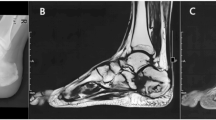Abstract
Most Clostridium species are part of saprophytic microflora in humans and animals; however, some are well-known human pathogens. We presented the challenges in identifying the Clostridium species isolated from a patient with an infected open dislocation of the proximal interphalangeal joint of the fourth digit of the right hand. The clinical materials were intraoperative samples collected from a patient diagnosed with an injury-related infection, with soft tissue loss and tendon sheath involvement. The available biochemical, molecular, and genetic techniques were used in identifying the isolated bacteria. The isolated bacterium was shown to have low biochemical activity; hence, it was not definitively identified via biochemical tests Api 20A or Rapid 32A. Vitek 2 and mass spectrometry methods were equally inconclusive. Clostridium tetani infection was strongly suspected based on the bacterium’s morphology and the appearance of its colonies on solid media. It was only via the 16S rRNA sequencing method, which is non-routine and unavailable in most clinical laboratories, that this pathogen was excluded. Despite appropriate pre-laboratory procedures, which are critical for obtaining reliable test results, the routine methods of anaerobic bacterium identification are not always useful in diagnostics. Diagnostic difficulties occur in the case of environment-derived bacteria of low or not fully understood biological activity, which are absent from databases of automatic bacterial identification systems.
Similar content being viewed by others
References
Angeletti S (2017) Matrix assisted laser desorption time of flight mass spectrometry (MALDI-TOF MS) in clinical microbiology. J Microbiol Methods 138:20–29
AlMogbel MS (2016) Matrix assisted laser desorption/ionization time of flight mass spectrometry for identification of clostridium species isolated from Saudi Arabia. Braz J Microbiol 47:410–413
Campbell IJ, Yen LTM, Loan HT, Diep TS, Nga TTT, Hoang NVM, Son LT, Chau VVN, Parry C, Farra JJ, Hien TT, Baker S (2009) Microbiologic characterization and antimicrobial susceptibility of Clostridium tetani isolated from wounds of patients with clinically diagnosed tetanus. Am J Trop Med Hyg 80:827–831
European Committee on Antimicrobial Susceptibility Testing. Breakpoint tables for interpretation of MICs and zone diameters. Version 8.0. http://www.eucast.org/clinical_breakpoints/ [accessed 29.01.2018]
Filia A, Bella A, von Hunolstein C, Pinto A, Alfarone G, Declich S, Rota MC (2014) Tetanus in Italy 2001–2010: a continuing threat in older adults. Vaccine 32:639–644
Gajdács M, Spengler G, Urban E (2017) Identification and antimicrobial susceptibility testing of anaerobic bacteria: Rubik’s cube of clinical microbiology? Antibiotics (Basel) 6:25
Hatheway LC (1990) Toxigenic clostridia. Clin Microbiol Rev 3:66–98
Kalia VC, Mukherjee T, Bhushan A, Joshi J, Shankar P, Huma N (2011) Analysis of the unexplored features of rrs (16S rDNA) of the genus Clostridium. BMC Genomics 12:18
Kierzkowska M, Majewska A, Kuthan RT, Sawicka-Grzelak A, Mlynarczyk G (2013) A comparison of Api 20A vs MALDI-TOF MS for routine identification of clinically significant anaerobic bacterial strains to the species level. J Microbiol Methods 92:209–212
Kim YJ, Kim SH, Park HJ, Park HG, Park D, Song SA, Lee HJ, Yong D, Choi JY, Kook JK, Kim HR, Shin JH (2016) MALDI-TOF MS is more accurate than VITEK II ANC card and API rapid ID 32 a system for the identification of clostridium species. Anaerobe 40:73–75
Kiu R, Caim S, Alcon-Giner C, Belteki G, Clarke P, Pickard D, Gordon D, Lindsay J (2017) Preterm infant-associated Clostridium tertium, Clostridium cadaveris, and Clostridium paraputrificum strains: genomic and evolutionary insights. Genome Biol Evol 9:2707–2714
Levy P-Y, Fournier P-E, Lotte L, Million M, Brouqui P, Raoult D (2014) Clostridium tetani osteitis without tetanus. Emerg Infect Dis 20(9):1571–1573
Nagy E (2014) Matrix-assisted laser desorption/ionization time-of-flight mass spectrometry: a new possibility for the identification and typing of anaerobic bacteria. Future Microbiol 9:217–233
Ortega DO, Jimenez LCV, Martínez R (2012) Isolation and typing of Clostridium spp.16S rRNA from soil samples obtained in areas with sudden mortality history in Colombia. Global Adv Res J Microbiol 1:33–40
Rodríguez-Cavallini E, Vargas P, Rodríguez C, Quesada-Gómez C, Gamboa-Coronado MM (2011) Phenotypic identification of over 1000 isolates of anaerobic bacteria recovered between 1999 and 2008 in a major Costa Rican hospital. Clin Microbiol Infect 17:1043–1047
Rhee P, Nunley MK, Demetriades D, Velmahos G, Doucet JJ (2005) Tetanus and trauma: a review and recommendations. J Trauma 58:1082–1088
Satoh T, Sato J, Abe T, Satoh A, Imamachi K, Kitagawa Y (2013) Difficulty in diagnosis of tetanus in Japan: report of case and review of the literature. J Oral Maxillofac Surg Med Pathol 25:55–60
Watanabe K, Horinishi N, Matumoto K (2015) Antibiotic-resistant bacterial group in field soil evaluated by a newly developed method based on restriction fragment length polymorphism analysis. Adv Microbiol 5:807–816
Verde F, Riboldi G, Zappa C, Ferretti M, Silani V, Mari D, Priori A (2014) An old woman with pressure ulcer, rigidity, and opisthotonus: never forget tetanus! Lancet 384:2266
Thorndale M, Jeraldob PR, Greenwood-Quaintanced KE, Yaob JZ, Chiab N, Hanssene AD, Abdele MP, Patel R (2016) Comparison of microbial DNA enrichment tools for metagenomic whole genome sequencing. J Microbiol Methods 127:141–145
Acknowledgements
We are grateful to Prof. Michel-Robert Popoff from the Department of Microbiology Anaerobic Bacteria and Botulism, Pasteur Institute, Paris (France), for 16S rRNA gene sequence analysis and toxigenicity determination and for suggestions and interpretation of the result.
Author information
Authors and Affiliations
Corresponding author
Ethics declarations
Conflict of interest
The authors declare that they have no conflict of interest.
Ethics statement
This article does not contain any studies with human participants or animals performed by any of the authors.
Rights and permissions
About this article
Cite this article
Kierzkowska, M., Pędzisz, P., Babiak, I. et al. Difficulties in identifying the bacterial species from the genus Clostridium in a case of injury-related osteitis. Folia Microbiol 63, 533–536 (2018). https://doi.org/10.1007/s12223-018-0597-0
Received:
Accepted:
Published:
Issue Date:
DOI: https://doi.org/10.1007/s12223-018-0597-0




